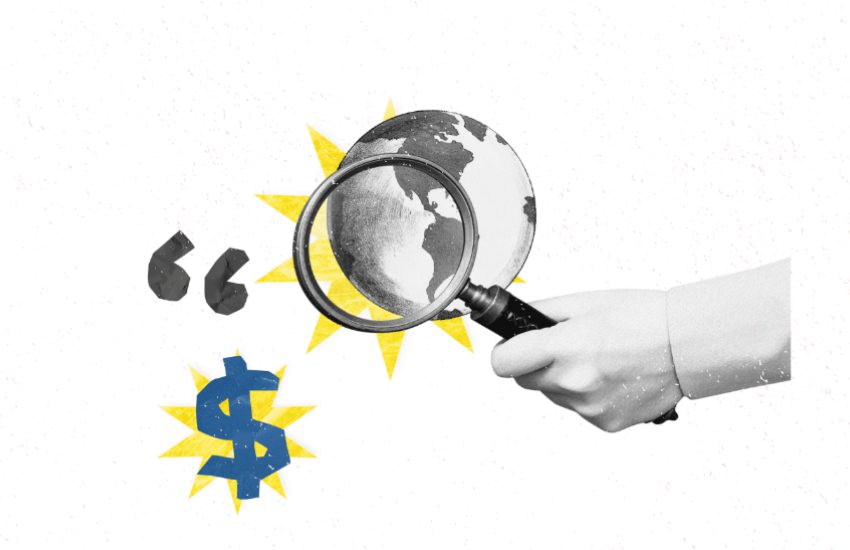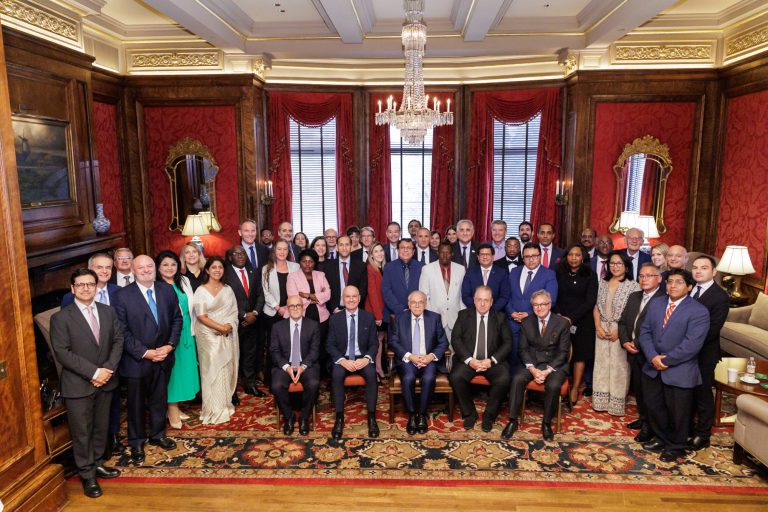Green Paper on Sustainable Finance
Mónica Malo, Director of Sustainability at CECA, took part in the Capital Letters Forum by Harmon, which brought together different experts from the public and private sectors to examine the fundamentals of a project that seeks to combine economic growth and sustainable development at all levels.
Not so long ago, when public opinion questioned the existence of climate change and the mere act of recycling was viewed with suspicion, the union between sustainability and economy sounded, to say the least, like wishful thinking. Today, however, the reality is quite different: sustainable and responsible investment has increased in recent years to USD 35 billion. A sign that sustainable finance is not only profitable for the planet, but also for businesses.
With this in mind, the Capital Letters Forum by Harmon brought together experts from different sectors to discuss the Green Paper on Sustainable Finance just hours after the publication of the order announcing the creation of the Sustainable Finance Council, one of its main measures. The objective: to analyse the key points of the document and to explore the challenges it poses by putting letters to numbers, as expressed in the forum's slogan.
The Green Paper on Sustainable Finance is a strategic project approved by the Spanish government, a draft of which was published in September last year. Its primary goal is to promote and guide the adaptation of companies and financial institutions to the European framework for sustainable finance to promote the transition to an emission-neutral economy. It will also further strengthen the relationship between economy and sustainability, and between the public administration and business.
Caring for the planet is profitable
Institutions such as the International Monetary Fund (IMF) predict that while global warming mitigation policies may have short-term economic costs, these are minimal compared to the benefits of timely action. Ana Puente, Deputy Director General for Sustainable and Digital Finance of the Ministry of Economy, Trade and Enterprise, referred to this at the beginning of her speech: 'Failure to act on climate change has long-term consequences that are not viable from an economic perspective. We cannot afford the impact of a disorderly transition'.
As a roadmap to prevent this from happening, the Green Paper identifies three key stakeholders for this challenge: the public sector, the business sector and the financial system, and has 'an ambitious yet realistic approach', in the words of the deputy director general.
In addition, the draft sets forth three goals: promoting the adaptation of the financial and business sector through measures such as the creation of a sandbox (a regulated environment where companies can develop and assess innovative sustainability projects under the supervision of the relevant authorities) and a repository for the disclosure of sustainability information; directing savings and investment towards sustainability with the promotion of green products and the Treasury's green bond programme; and promoting public-private cooperation through the creation of the Sustainable Finance Council.
Working together is essential to success
The implementation of the CSRD (Corporate Sustainability Reporting Directive) or the application of the ESRS (European Sustainability Reporting Standards) in 2024 leaves no room for doubt: the EU is going green. In this context, the Green Paper approved in Spain represents a new milestone in the region in the field of sustainable finance. David González, EIF (European Investment Fund) representative for Spain and Portugal, praised the market's performance and shared a fact: 'Spain is the leading country in terms of demand from financial institutions that want to secure guarantees from the European Investment Fund to provide sustainable financing'. Since it began its activity in 1996, this organisation has supported almost 400,000 Spanish SMEs and has worked through 170 financial institutions.
As for the measures outlined in the document, one of the most talked-about was the creation of the Sustainable Finance Council. This governance body acts as a forum for cooperation between public and private stakeholders, including representatives from public administrations, supervisory bodies, the financial sector, the private sector, the third sector and independent experts. Its main functions include promoting and monitoring the actions proposed in the Green Paper, analysing the challenges related to the regulatory framework for sustainable finance and facilitating discussions on issues such as decarbonisation, the circular economy and biodiversity protection.
As announced in the Spanish Official State Gazette, the body will have twenty non-ex officio and renewable members and thirteen ex officio members. 'We need to find a balance so that it is operational in decision-making and so that all stakeholders are represented, because it has to be plural and inclusive', explained Pedro Cadarso, ESG Risk Advisor at the Spanish Banking Association.
Enrique Tombas, Chairman of Suma Capital, added that consumers should be part of the organisation's discussions: 'The transition is going to be much easier through conviction, rather than through imposition, and this happens when entrepreneurs see that their customers want their products to be sustainable'.
Andrea González, CEO of Spainsif, explained the fundamental role that associations such as the one she leads (made up of different stakeholders from the sustainable finance ecosystem) can play in the Council: 'The organisation's flexibility mechanism is a complete and resounding success. The more multi-stakeholder clusters there are, the better we will be able to fulfil the function of conveying the views of the many sectors that are represented in sustainable finance.
The remaining challenges
Other measures in the Green Paper include the creation of a sandbox where, for example, financial institutions will be able to propose methodologies for climate risk analysis or to identify data gaps. Its usefulness was highlighted by the ESG Risk Advisor of the Spanish Banking Association: 'We see it as a very useful platform for learning about taxonomy, and we believe it can be of great benefit in reducing ambiguity and improving the lack of clarity and inconsistency of certain regulations'.
However, the need to create a more favourable tax framework to incentivise investments in sustainability was highlighted. To this end, the implementation of deductions, credits or tax exemptions to facilitate investment in renewable energies, support the circular economy or decarbonise production processes was proposed. 'This would be very welcome, but as progress on this issue is difficult, we have begun to consider alternatives: non-tax incentives for financial education or the market, via certain products', argued the CEO of Spainsif.
Mónica Malo, Director of Sustainability at CECA and Cecabank, agreed with González, and added: 'It is clear to us in the banking sector that to stimulate this appetite, tax incentives are necessary. We obviously have a very important role to play, but it is true that there is another series of levers that can be brought to the table to invigorate the ecosystem'.
It cannot be denied that the text represents a positive effort on the part of the administration to develop the role of the financial sector in the ecological transition, as well as to harmonise practices between the public and private sectors. However, like almost any guide, it has room for improvement. Pedro Cadarso stressed that 'it has been very welcome in the banking sector', but that they believe 'it is necessary to properly allocate responsibilities between the public administrations, the productive sectors and the financial sector'.
Something that Mónica Malo agreed with, adding that 'it is a very broad framework that requires many sequels'. The Director of Sustainability at CECA and Cecabank felt that there was a need for the creation of more specific working groups, as well as leadership and shared responsibility between the different stakeholders, not just the banking sector.
Despite its limitations, the Green Paper on Sustainable Finance proved to be a valuable framework for moving towards a sustainable ecological transition, and this Capital Letters meeting shed light on some of the more technical aspects of the paper, using clear language. After all, for the union between sustainability and economy to prosper, it is essential that they listen and understand each other.













